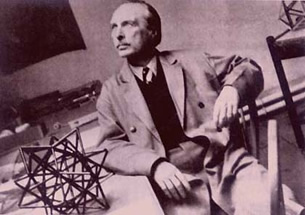Rudolf Laban (1879-1958) was born in Bratislava, Hungary in 1879 (in what is now Slovakia) to a military family. Known historically as the father of European modern dance, Laban was a visionary, humanist, teacher and theoretician, whose revolutionary ideas bridged the gap between the performing arts and science.
“Laban is movement’s greatest map-maker… Hodgson compares him to Stravinsky, Picasso, and Stanislavsky, and it wouldn’t surprise me if he turned out to be more significant than all of these.”
James Davidson, The Daily Telegraph (London) July 21, 2001He applied his theories to many areas—from the performing and visual arts to education to efficiency studies of factory workers. As an author and teacher, he influenced artists and thinkers as diverse as Kurt Jooss, Mary Wigman, and DH Lawrence. He shaped the philosophical basis of the new German Dance Theatre that flourished after the 1960s with Pina Bausch and Susannah Linke and others.
Laban proposed and facilitated the creation of Labanotation, a clear and concise language for describing human movement. Applications of Labanotation include the restaging of dances as scores, enabling them to be restaged and performed long after their creation.
In all, he uncovered the basic principles of movement structure and purpose. His influence on the fields of dance performance and choreography, theatre, dance/movement therapy, and visual art was substantial, but his work has propagated beyond even his wildest imaginings. He was both a visionary and a man before his time.
For more information about Laban and his work, please see Rudolf Laban: An Extraordinary Life, by Valerie Preston-Dunlop, UK: Dance Books, 1998; Rudolf Laban by Karen Bradley, Routledge, 2008; and Rudolf Laban: The Dancer of the Crystal by Evelyn Doerr, 2007.

